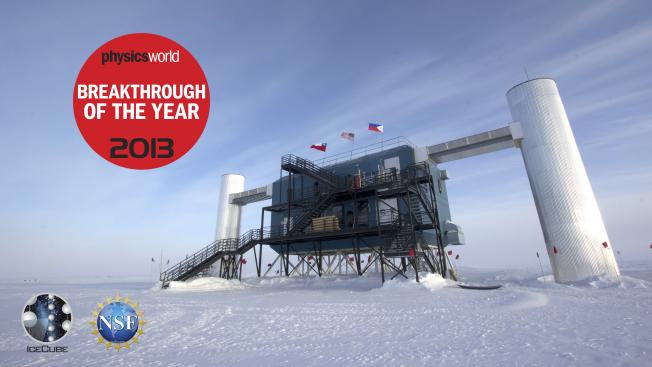Fermi gamma-ray "bubbles" from stochastic acceleration of electrons.
Phys Rev Lett 107:9 (2011) 091101
Abstract:
Gamma-ray data from Fermi Large Area Telescope reveal a bilobular structure extending up to ∼50° above and below the Galactic Center. It has been argued that the gamma rays arise from hadronic interactions of high-energy cosmic rays which are advected out by a strong wind, or from inverse-Compton scattering of relativistic electrons accelerated at plasma shocks present in the bubbles. We explore the alternative possibility that the relativistic electrons are undergoing stochastic 2nd-order Fermi acceleration by plasma wave turbulence through the entire volume of the bubbles. The observed gamma-ray spectral shape is then explained naturally by the resulting hard electron spectrum modulated by inverse-Compton energy losses. Rather than a constant volume emissivity as in other models, we predict a nearly constant surface brightness, and reproduce the observed sharp edges of the bubbles.Searches for periodic neutrino emission from binary systems with 22 and 40 strings of IceCube
ArXiv 1108.3023 (2011)
Abstract:
In this paper we present the results of searches for periodic neutrino emission from a catalog of binary systems. Such modulation, observed in the photon flux, would be caused by the geometry of these systems. In the analysis, the period is fixed by these photon observations, while the phase and duration of the neutrino emission are treated as free parameters to be fit with the data. If the emission occurs during ~20% or less of the total period, this analysis achieves better sensitivity than a time-integrated analysis. We use the IceCube data taken from May 31, 2007 to April 5, 2008 with its 22-string configuration, and from April 5, 2008 to May 20, 2009 with its 40-string configuration. No evidence for neutrino emission is found, with the strongest excess occurring for Cygnus X-3 at 2.1 sigma significance after accounting for trials. Neutrino flux upper limits for both periodic and time-integrated emission are provided.The Lateral Trigger Probability function for the Ultra-High Energy Cosmic Ray Showers detected by the Pierre Auger Observatory
Astroparticle Physics 35 (2011) 266-276
Abstract:
In this paper we introduce the concept of Lateral Trigger Probability (LTP) function, i.e., the probability for an extensive air shower (EAS) to trigger an individual detector of a ground based array as a function of distance to the shower axis, taking into account energy, mass and direction of the primary cosmic ray. We apply this concept to the surface array of the Pierre Auger Observatory consisting of a 1.5 km spaced grid of about 1600 water Cherenkov stations. Using Monte Carlo simulations of ultra-high energy showers the LTP functions are derived for energies in the range between 10^{17} and 10^{19} eV and zenith angles up to 65 degs. A parametrization combining a step function with an exponential is found to reproduce them very well in the considered range of energies and zenith angles. The LTP functions can also be obtained from data using events simultaneously observed by the fluorescence and the surface detector of the Pierre Auger Observatory (hybrid events). We validate the Monte-Carlo results showing how LTP functions from data are in good agreement with simulations.2nd-order Fermi acceleration as the origin of the Fermi bubbles
ArXiv 1108.1754 (2011)
Abstract:
Gamma-ray data from Fermi-LAT show a bi-lobular structure extending up to 50 degrees above and below the Galactic centre, coincident with a possibly related structure in the ROSAT X-ray map which presumably originated in some energy release close to the centre a few million years ago. It has been argued that the gamma-rays arise due to inverse Compton scattering of relativistic electrons accelerated at plasma shocks present in the bubbles. We explore the alternative possibility that the relativistic electrons undergo stochastic 2nd-order Fermi acceleration in the entire volume of the bubbles by plasma wave turbulence. This turbulence is generated behind the outer shock and propagates into the bubble volume, leading to a non-trivial spatial variation of the electron spectral index. Rather than a constant volume emissivity as predicted in other models we find an almost constant surface brightness in gamma-rays and also reproduce the observed sharp edges of the bubbles. We comment on possible cross-checks in other channels.2nd-order Fermi acceleration as the origin of the Fermi bubbles
(2011)



